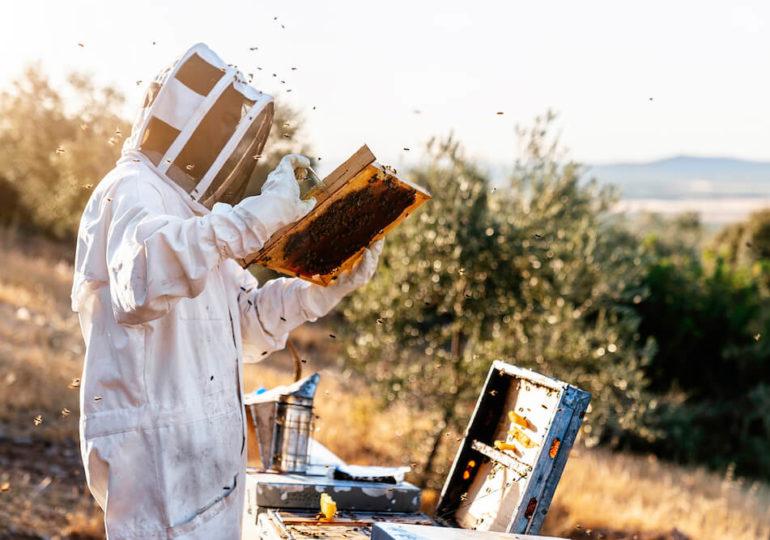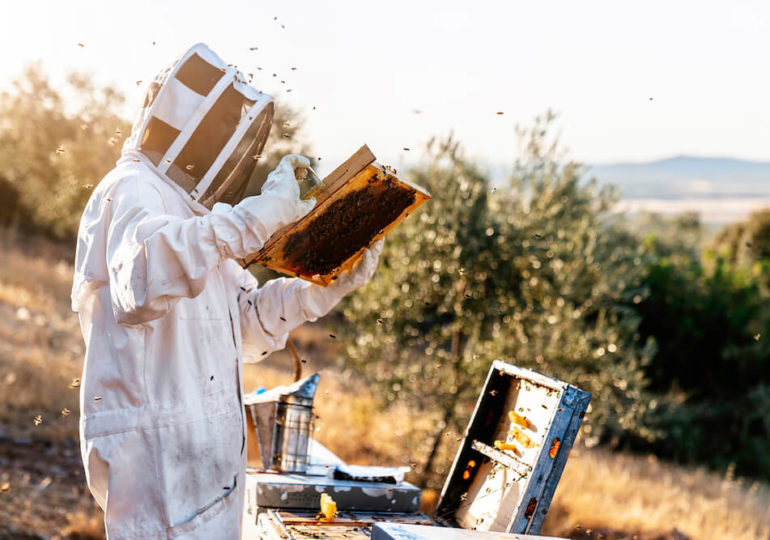
With the arrival of spring, it’s time to don your beekeeper’s hat and get ready for the essential tasks that come with the season! As the flowers bloom and nature awakens, our buzzing friends require some attention and care. From inspecting hives to ensuring an ample food supply, this article will guide you through the essential beekeeping tasks for the season. So grab your gloves and join us on this beekeeping adventure!
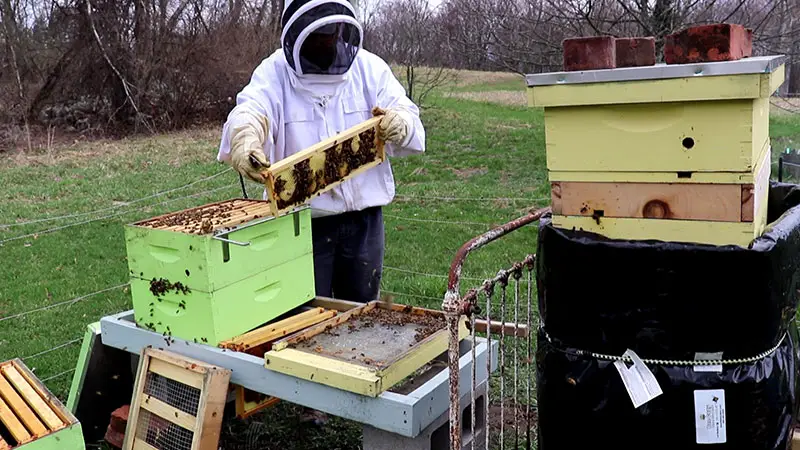
Inspecting the Hive
Checking for Survival
The first task in your beekeeping journey is to inspect the hive and check for the survival of your bees. This involves carefully opening the hive and observing the bees’ activity. You should look for signs of life, such as bees flying in and out of the entrance, buzzing inside the hive, and pollen being brought in. If you see a lack of activity, it could be an indication of a weak or dead colony. In such cases, further investigation is needed to understand the cause and take the necessary actions.
Assessing Queen Performance
One of the essential aspects of beekeeping is ensuring the queen bee is performing her duties effectively. During the hive inspection, you should pay special attention to the presence and behavior of the queen. Look for signs of her laying eggs, such as open brood cells, larvae, or capped brood. A healthy queen will have a good brood pattern, with cells evenly distributed and in various stages of development. If you notice any abnormalities, such as spotty brood pattern or an absence of brood, it may indicate issues with the queen’s performance.
Examining Brood Patterns
While inspecting the hive, it is crucial to carefully examine the brood patterns. Brood patterns refer to the arrangement and distribution of brood cells within the hive. A healthy brood pattern should be dense and well-organized, indicating a thriving colony. Look for signs of irregular or patchy brood patterns, which could be an indication of various problems, such as disease, pests, or issues with the queen. It is essential to identify any abnormalities and take appropriate action to maintain a healthy brood population.
Checking for Disease and Pests
Another important task in hive inspection is checking for signs of disease and pests. Be vigilant for common bee diseases, such as American Foulbrood, European Foulbrood, or Nosema infection. Look for unusual odors, discoloration, or abnormalities in the brood cells. Similarly, be on the lookout for common pests like Varroa mites or hive beetles. These parasites can significantly impact the health of your hive. Regular hive inspections and proactive management strategies will help you identify and address any disease or pest issues promptly.
Providing Food and Water
Feeding the Bees
To ensure the well-being of your bees, it is important to provide them with sufficient food, particularly during periods of scarcity. Feeding your bees can involve various methods, such as sugar syrup, pollen patties, or fondant. Sugar syrup, made by dissolving sugar in water, is a common practice to supplement their diet. This is especially crucial during the spring when nectar availability may be low. Regularly check the hive’s food stores and replenish them as needed to prevent starvation.
Water Sources
Bees require access to a reliable water source for hydration and to regulate the hive’s temperature. providing a water source near the hive is essential to prevent bees from seeking water in undesirable locations, such as pools or birdbaths. A simple method to create a water source is by placing a shallow dish filled with clean water and adding floating objects for the bees to land on while drinking. This will help maintain the overall health and productivity of your hive.
Expanding the Hive
Adding Supers
As the bee population grows and nectar flow increases, it may be necessary to add supers to your hive. Supers are additional boxes or frames that provide more space for bees to store honey. By adding supers, you give your bees sufficient room to expand their colony and accumulate surplus honey. Ensure that the supers are clean and ready for use before placing them on the hive. This expansion ensures that your bees have enough storage space and encourages honey production.
Splitting the Hive
When your hive becomes crowded, splitting it is a method to prevent swarming and create new colonies. This process involves dividing the existing hive into two separate hives, each with its own queen. Splitting the hive not only helps prevent swarming but also allows for colony growth and the possibility of creating new colonies. Careful consideration and planning are necessary to carry out a successful hive split and ensure the well-being of both the original and new hive.
Swarm Prevention
Swarming is a natural behavior of honeybees, but it can significantly impact the size and productivity of your hive. Swarm prevention techniques aim to reduce the likelihood of swarming by managing colony conditions. Providing ample space within the hive, regular inspections, and monitoring the overall health of the colony can help prevent swarming. Recognizing swarm triggers, such as overcrowding or an aging queen, allows you to take prompt action and implement strategies to prevent swarming and maintain a strong, productive colony.
Managing Swarm Control
Recognizing Swarm Triggers
To effectively manage swarm control, it is essential to recognize the triggers that can lead to swarming. Some common triggers include overcrowding of the hive, excessive drone population, reduced food stores, or an aging queen. Regular inspections and tracking the growth and behavior of your colony will help you identify these triggers and take necessary precautions to maintain hive stability.
Creating Bait Hives
Bait hives are strategically placed empty hives meant to attract swarming bees and provide them with an alternative space to establish a new colony. By setting up bait hives in your beekeeping area, you increase the chances of capturing swarms and preventing them from moving into unwanted locations. Bait hives can be constructed using old bee equipment or purchased commercially. It is important to position them at a suitable height and location to maximize their effectiveness.
Employing Swarm Prevention Techniques
Several techniques can be employed to prevent swarming and maintain hive stability. One commonly used method is swarm management through the removal of queen cells. By regularly inspecting the hive and removing any queen cells, you discourage swarming behavior. Another technique is the practice of creating nucleus colonies, or splits, by taking a portion of the original hive and establishing a new colony. Additionally, providing sufficient hive space and ensuring a healthy and productive queen are crucial in managing swarm control.
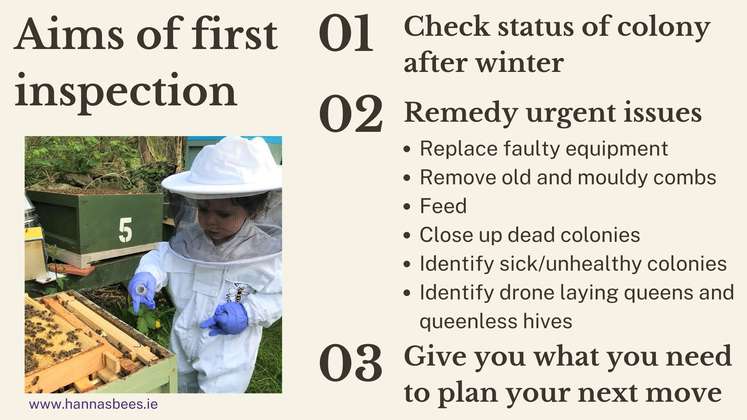
Monitoring Hive Health
Regular Monitoring
Regular monitoring of your hive is vital in maintaining the health and productivity of your bees. By conducting regular inspections, you can identify any issues or abnormalities early on and take necessary action. Set a schedule for hive inspections, ensuring that you consider seasonal variations, hive activity, and weather conditions. This will help you keep track of your hive’s progress and address any potential problems promptly.
Assessing Population
Monitoring the population of your hive provides valuable insights into its overall health and strength. A healthy hive should exhibit a strong and growing population, with a balance of worker bees, drones, and the queen. Regularly assess the population by observing the number and behavior of bees during inspections. A sudden decline in population or signs of an imbalanced population may indicate issues like disease, pests, or an aging queen.
Record Keeping
Maintaining detailed records of your hive’s activities and observations is a beneficial practice for every beekeeper. By keeping track of hive inspections, health assessments, and any treatments or interventions, you can develop a comprehensive history of your hive’s progress. These records can help you identify patterns, track changes over time, and make informed decisions for future hive management.
Noting Bee Behavior Changes
Bees exhibit certain behaviors that can indicate changes in their health, behavior, or overall well-being. While inspecting the hive, pay attention to any unusual changes in bee behavior, such as aggressive behavior, abnormal buzzing sounds, or disoriented flights. These changes may be signs of stress, disease, or other issues. Early detection of such changes allows you to take prompt action to address the underlying concerns and maintain hive health.
Treatment for Varroa Mites
Varroa mites are a common pest that can significantly impact hive health if left untreated. These parasites attach themselves to bees and feed on their vital fluids, weakening and potentially killing the colony. Regular monitoring for varroa mites is vital, and if an infestation is detected, appropriate treatments should be implemented. There are various methods available for controlling varroa mites, including using organic acids, essential oils, or synthetic treatments. It is crucial to carefully follow the instructions and recommended doses to ensure effective mite control without harming the bees.
Re-queening
Evaluating Queen Performance
Evaluating the performance of the queen is an important aspect of hive management. As the leader of the colony, the queen plays a critical role in ensuring the productivity and overall health of the hive. During inspections, observe the queen’s behavior, brood patterns, and overall population to assess her performance. If you notice consistent signs of poor performance, such as irregular brood patterns, low egg-laying rate, or aggressive behavior, it may be necessary to consider re-queening the hive.
Replacing the Queen
Re-queening involves replacing the existing queen with a new one to improve the hive’s performance or address any issues. This process can be done through various methods, such as purchasing a mated queen or allowing the hive to raise their own queen from selected brood cells. Before replacing the queen, ensure that the hive is well-prepared, with appropriate conditions and resources to support the introduction of a new queen. Re-queening should be considered as a strategic decision aimed at improving the overall health and productivity of the hive.
Introducing the New Queen
Introducing a new queen to the hive requires careful planning and execution to ensure a successful transition. Several methods can be used for queen introduction, such as using queen cages, candy plugs, or the newspaper method. Whichever method you choose, it is crucial to allow the hive time to accept the new queen and gradually integrate her into the colony. Monitoring the acceptance process and providing the necessary support can help ensure a smooth transition and maximize the chances of a successful queen replacement.
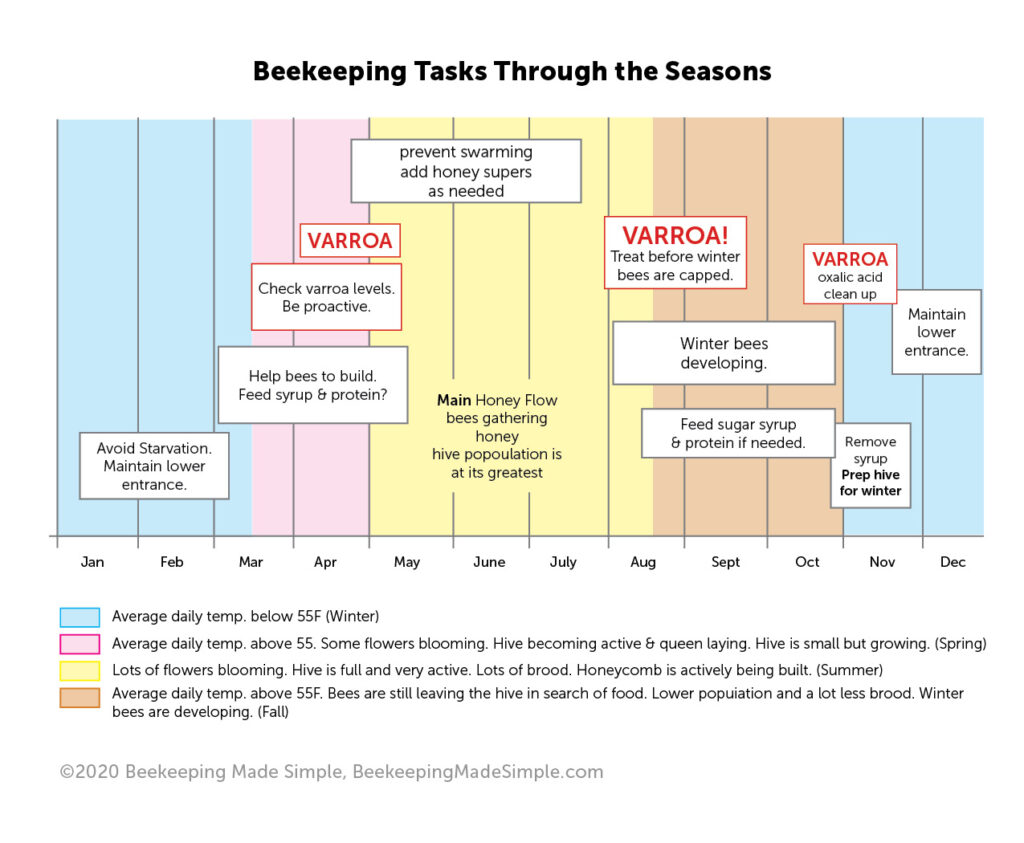
Providing Pollen and Nectar
Planting Pollinator-Friendly Flowers
Creating a bee-friendly environment is essential for the health and well-being of your bees. By planting a variety of pollen and nectar-rich flowers in your surroundings, you provide an abundant and diverse foraging resource for the bees. Choose flowers that bloom at different times throughout the year to ensure a continuous food supply. Native wildflowers, herbs, fruit trees, and clover are popular choices among beekeepers. Planting pollinator-friendly flowers not only supports your honeybee colonies but also contributes to the overall conservation of pollinators.
Creating Diverse Forage
While planting pollinator-friendly flowers is crucial, ensuring a diverse range of forage is equally important. Bees require a balanced diet that includes various sources of nectar and pollen to meet their nutritional needs. Consider the availability of wildflowers, trees, and crops in your area and plan your planting accordingly. Encouraging biodiversity not only benefits your bees but also promotes a healthy ecosystem.
Pest and Pesticide Considerations
When providing pollen and nectar sources for your bees, it is vital to consider the potential exposure to pesticides. Avoid using chemical pesticides or insecticides in close proximity to your hives, as they can harm the bees and contaminate their food sources. If pesticide use is necessary, follow the recommended application guidelines and consider the impact on pollinators. Additionally, be cautious about the plants you introduce near your hives, as some flowers treated with systemic pesticides may contain harmful residues.
Providing Supplemental Feeding
In situations where natural forage is limited, supplemental feeding may be necessary to ensure the well-being of your bees. Sugar syrup or pollen patties can be provided to supplement their diet during periods of scarcity. Monitor the hive’s food stores regularly and assess the need for supplemental feeding based on the availability of natural resources. It is important to strike a balance between providing supplemental feed and encouraging foraging from natural sources.
Maintaining Equipment
Cleaning and Repairing Hive Components
Regular maintenance and cleaning of your hive equipment are essential to ensure its longevity and functionality. Inspect hive components, such as frames, boxes, and bottom boards, for any damages or signs of wear. Replace any worn-out or damaged components to maintain a sturdy and secure hive. Additionally, practice good hygiene by removing debris, propolis, or wax buildup from the hive to prevent the growth of mold or pests.
Replacing Old Frames
Frames provide the structural support for the bees to build their comb and store honey. Over time, frames can become worn, damaged, or infested with pests. It is important to periodically assess the condition of frames and replace any that are compromised. Regularly rotating frames within the hive also helps prevent uneven wear and allows for proper honey extraction.
Organizing Hive Tools and Supplies
Efficient hive management is greatly facilitated by organizing your beekeeping tools and supplies. Keep your tools clean, well-maintained, and organized in a designated area. This ensures easy access during hive inspections and other beekeeping tasks. Storing your equipment in a dry and secure location helps prolong its lifespan and protects it from damage or exposure to pests.
Storing Equipment
Proper storage of your beekeeping equipment is crucial during the off-season or periods of inactivity. Clean and dry all equipment thoroughly before storing it to prevent the growth of mold or pests. Consider using airtight containers or sealed bags for frames and other smaller components. Store your equipment in a cool and dry location, away from direct sunlight and extreme temperatures. Regularly inspect your stored equipment to ensure its integrity and address any maintenance needs.
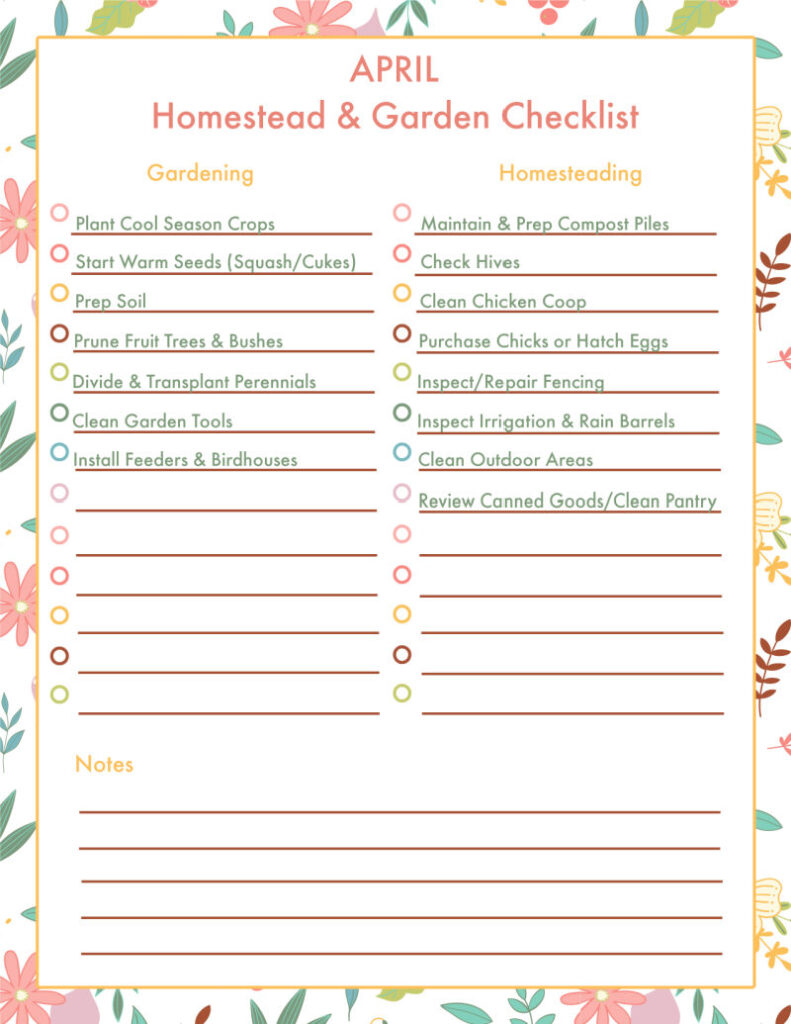
Preparing for Harvest
Monitoring Honey Stores
As the honeyflow season approaches, it is essential to monitor your hive’s honey stores. Adequate honey reserves ensure the survival of your bees during periods of low nectar availability. Inspect the frames and determine if there is sufficient honey surplus beyond what the bees require for their own needs. This assessment will guide your decisions regarding honey harvesting and the need for additional supers.
Adding Supers for Honey Production
To encourage honey production, additional supers may need to be added to your hive. Supers provide extra comb space for the bees to store honey. Timing the addition of supers is critical, as it should coincide with the availability of nectar and the strength of your colony. Ensure the frames in the supers are clean and free from any obstructions to facilitate the bees’ honey-making process.
Extracting Honey
Once the honey super is filled with capped honey, it is time to extract the honey. Carefully remove the frames from the hive, being mindful not to harm the bees or brood. Use a honey extractor to spin the frames and collect the honey without damaging the comb. Extraction should be done in a clean and hygienic environment to maintain the quality and purity of the honey.
Processing and Storing Honey
After extracting the honey, it is important to process and store it properly. Allow the extracted honey to settle and ensure any air bubbles rise to the surface. Filter the honey to remove any debris or wax particles for a clean and smooth final product. Store the honey in food-grade containers in a cool and dark place to maintain its freshness and quality. Properly processed and stored honey can provide you and your family with a delicious and rewarding treat from your beekeeping efforts.
Continuing Education
Attending Beekeeping Workshops
Continuing education plays a vital role in expanding your knowledge and improving your beekeeping skills. Attending beekeeping workshops or seminars provides an opportunity to learn from experienced beekeepers, network with fellow enthusiasts, and gain valuable insights into the latest trends and practices. Workshops often cover a wide range of topics, including hive management, pest control, bee health, and honey production.
Joining Beekeeping Associations
Joining a beekeeping association or club offers numerous benefits to aspiring and experienced beekeepers alike. These organizations provide a platform for knowledge-sharing, mentorship, and community engagement. By becoming a member, you gain access to resources, local expertise, and the opportunity to participate in hands-on training sessions, events, and apiary visits. Additionally, these associations often advocate for beekeeping interests and help promote sustainable beekeeping practices.
Reading Books and Blogs
Books and blogs are valuable sources of information for beekeepers of all levels. They offer in-depth knowledge, practical tips, and personal experiences shared by beekeeping experts and enthusiasts. Reading about various topics, such as hive management, bee anatomy, nutrition, disease prevention, or honey production, enhances your understanding and decision-making abilities. Keep yourself updated with the latest publications in the field to stay abreast of the evolving practices and techniques.
Staying Informed about Best Practices
Beekeeping is a dynamic field, with research and innovations constantly shaping best practices. It is essential to stay informed about the latest developments, guidelines, and regulations relating to beekeeping. Follow reputable sources, such as government websites, academic publications, or reputable beekeeping associations, to ensure you have up-to-date information. Staying informed allows you to adapt your techniques, implement best practices, and contribute to the well-being of your bees and the wider beekeeping community.
By following these essential beekeeping tasks, you can ensure the health and productivity of your hives. Remember to be consistent, observe your bees closely, and adapt your management strategies accordingly. Whether you are a beginner or an experienced beekeeper, Spring is the perfect time to spring into action and engage with your buzzing companions!
